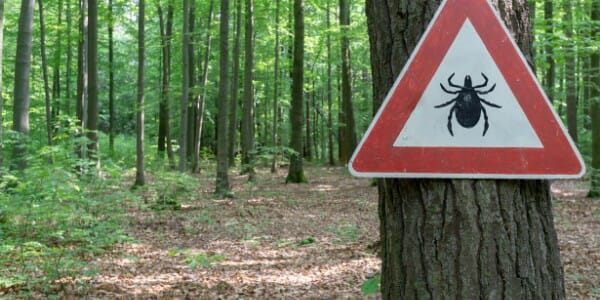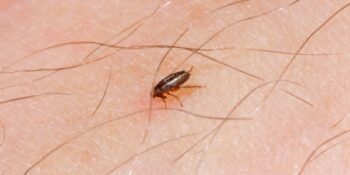
Many people who live on Long Island love to hike, especially with so many great trails and parks to choose from. Some of our favorites include Caumsett State Park in Lloyd Harbor, Sunken Meadow State Park, Kings Park and the Robert Moses lighthouse walk. But, while hiking on Long Island, you’ll often find yourself in an area with lots of trees and a thick layer of leaves that cover the ground as the weather cools. It is important that before you head out on your hike or walk to be aware of ticks and take preventative measures to protect yourself, your family and your pets. Here are some helpful things to know as you enjoy the outdoors this season.
How to Protect Yourself from Ticks
Even though the trees are a beautiful sight as they start falling in autumn, you might want to try to avoid wooded and bushy areas with high grass and leaves where ticks are found. You can also apply insect repellents that contain DEET or Permethrin. And, we suggest wearing light colored clothes, long pants, a long-sleeve shirt and closed toe shoes to avoid ticks and prevent a tick bite.
Walking in the middle of the path is also recommended so you can avoid having to walk through grass or leaves where ticks may cling onto you.
How to Check Yourself for Ticks
Ticks are small and often hide in crevices and warm spots. When you come back from hike, check your body to be sure that you haven’t brought ticks home with you. Inspect yourself, your children, and your pets, especially the legs and groin. Ticks usually get picked up on the lower legs and then climb upward in search of a meal.
It is best not to stay in the outfit you wore on your hike afterwards. Remove the clothing you wore on your hike and shake them out or place them in an isolated area in case you may have any ticks on your clothing.
Don’t forget about your dog, too! Your veterinarian is the best person to give you a recommendation for your furry friend.
Do I Have a Tick Bite?
A tick bite usually looks like a small, red bump and might have a round bulls-eye rash. Not having this rash is no guarantee that you haven’t been bitten by a tick. The mark will typically fade away in a few days, but be aware of any potential signs of symptoms up to a month after you’ve experienced a tick bite. Ticks cause Lyme disease and more including babesiosis, ehrlichiosis, Rocky Mountain spotted fever, tularemia, tickborne relapsing fever. So you want to make sure you haven’t contracted any of these illnesses.
What Does a Tick Look Like?
Ticks are tiny! They are more often felt rather than seen, so when you are inspect your body or someone else’s you may want to run your hand along the skin to detect any tiny bumps. Long Island is the home to the American dog tick, blacklegged tick, brown dog tick and lone star tick. See the picture below of the 2 most common kinds of ticks on Long Island – the Lone Star tick and the Deer Tick.
How to Remove a Tick if You Find One on You
If you do get a tick on your body, you need to know the proper way to remove the tick. Use tweezers with a fine tip to grab the tick as close to the skin as possible. Pull upward with a smooth motion. You don’t want to leave the mouth-parts in your skin. You also do not want to squash the tick as it could still transmit disease this way.
When the tick is removed, wash the area with soap and water. Call your doctor ASAP if you develop a rash, headache, pain or fever.
Thanks to the trusted CDC Centers for Disease Control and Prevention for this important information!
How to remove a tick from a dog
Every time your dog or cat returns from outside, run your hands over the animal’s entire body to check for bumps or raised areas. Inspect any area of concern closely to determine if it is a tick. You’ll want to remove a tick on your pet in the same way that you remove a tick on yourself. Using tweezers to pull them upward. Don’t forget to wash the area with soap and water!
Lawn Treatments as Tick Prevention
Because Suburban Exterminating prioritizes the safety of you and your family, we offer lawn treatments as a way to prevent ticks in your lawn and around your home. That your family, children and pets can enjoy a pest-free* home and environment.
If you find a tick in your home or think you have ticks in your yard, contact a licensed pest professional who can inspect and recommend a course of action to reduce or eliminate ticks on your property.





